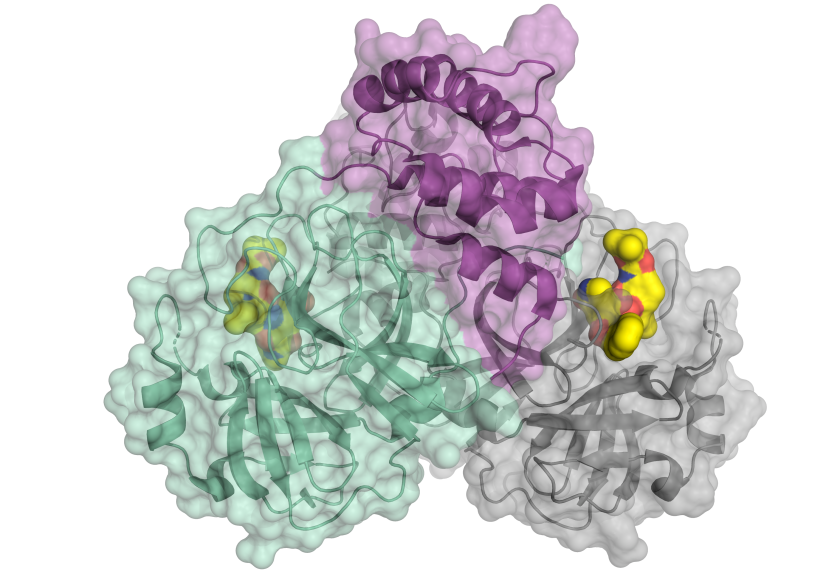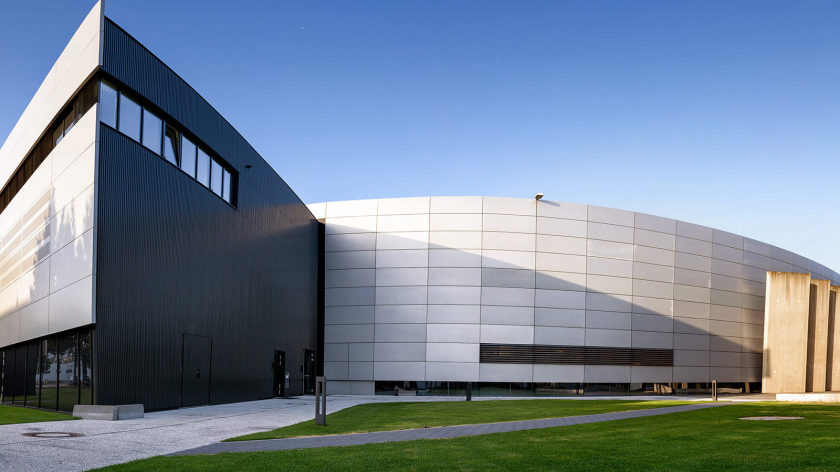Protein crystallography and the coronavirus
Which protein of the SARS-CoV-2 virus was investigated at BESSY II?

Schematic representation of the corona virus protease. The enzyme occurs as a dimer consisting of two identical molecules. One part of the dimer is shown in green and violet, the other in grey. The small molecule in yellow binds to the active centre of the protease and might serve as a blueprint for an inhibitor. © HZB
The main protease of the SARS-CoV-2 virus was studied at BESSY II. This protein is essential for the reproduction of the virus. The chemist Prof. Dr. Rolf Hilgenfeld carried out these investigations on BESSY II in order to identify suitable docking targets for an active agent, such as an inhibitor.
Why is protein crystallography so important for drug development?
An active substance must “dock” (chemically bind) to a location on the protein. Like a key in a lock, it must fit in order to inhibit the function of the protein. Many proteins are being studied at BESSY II with the aim of developing active agents.
A high-throughput method is available at the MX beamlines for this purpose, allowing hundreds of drug fragments to be systematically tested in protein crystals. Effective therapeutic drugs can be developed much more quickly using these fragments as building blocks for active substances.
What can BESSY II contribute?

BESSY II
Research into urgent social problems is a top priority. We provide tools and expertise for advancing the work on discovering potential vulnerabilities in the SARS-CoV-2 virus. All data and results are immediately available to the entire scientific community so that drugs can be developed as quickly as possible. Drug development itself does not take place at BESSY II, but at other research facilities. At BESSY II, however, we can offer outstanding tools for accelerating the search for active substances.
